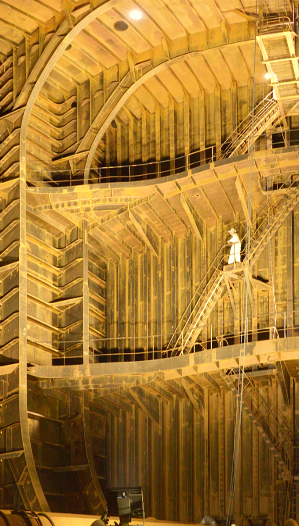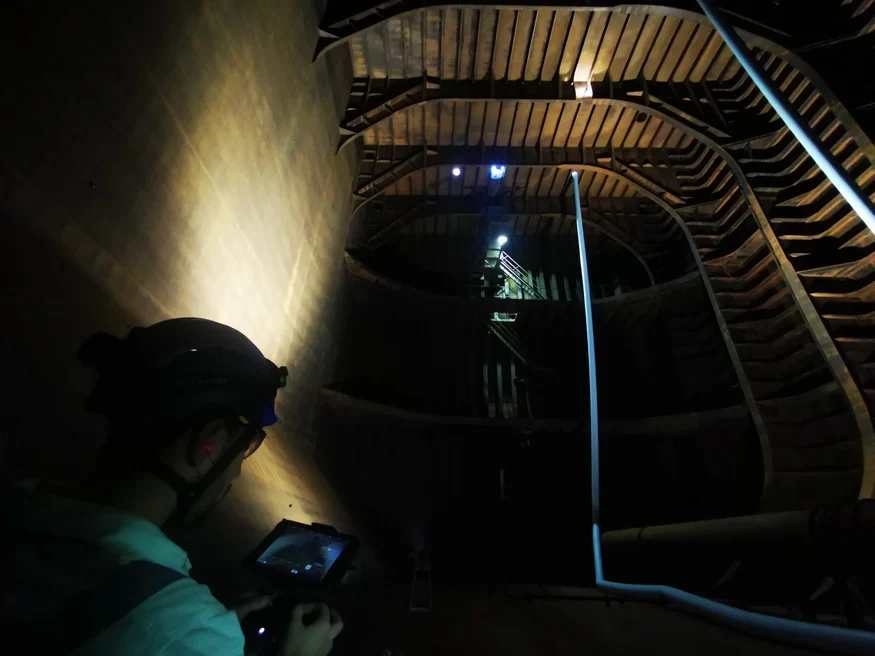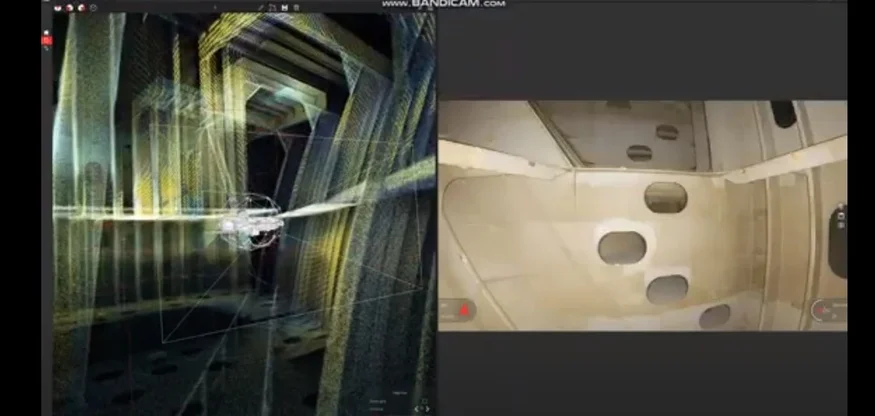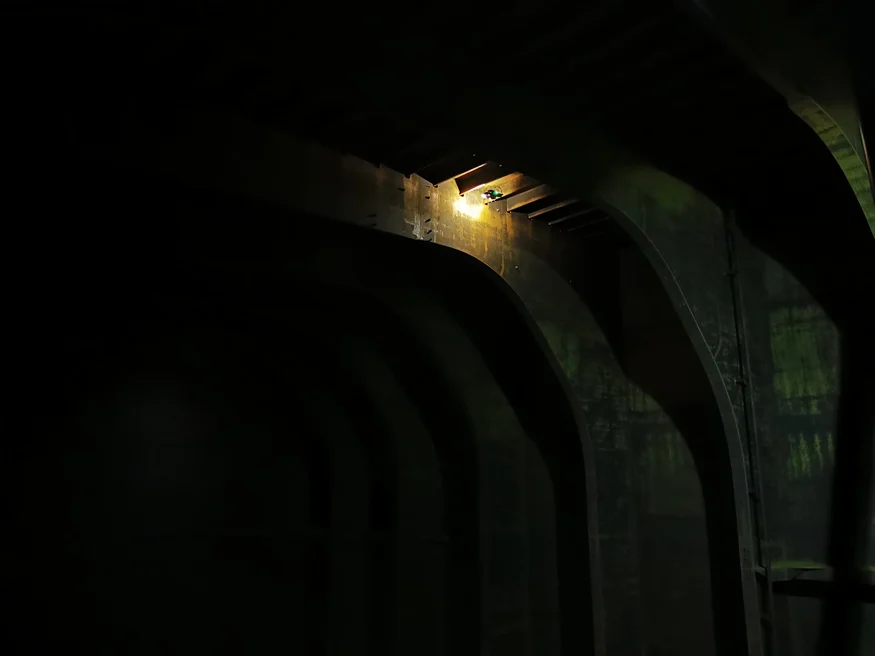Remote Hull inspection saves $1 million with the Elios 3
C-Bird conducted a hull inspection on a cargo ship using the Elios 3, achieving results that were safer, faster, and more efficient than ever before. SAFETY: The Elios 3 eliminated the need for scaffolding in cargo tanks, avoiding around 10,000 hours of work at height in confined spaces. COST SAVINGS: By replacing scaffolding with the Elios 3, C-Bird achieved a direct cost saving of approximately $1 million during the vessel survey, along with significant time and logistics savings. ENVIRONMENTAL BENEFITS: Using a drone instead of rafting to inspect cargo tanks prevents the generation of large volumes of oil-contaminated water, reducing environmental impact. DATA QUALITY: The onboard LiDAR of the Elios 3 enabled precise data localization and easy sharing of findings with all stakeholders, improving transparency and decision-making. Over 90% of the world's cargo vessels are governed by the IACS Common Structural Rules (CSR), which set strict standards for design, construction, and maintenance. Vessels must undergo periodic Class renewals every five years, with the Hull Survey being a critical part of this process. For crude oil tankers, these inspections are especially challenging due to the difficulty of accessing internal structures within the Cargo Oil Tanks (COTs). Traditionally, this required either building scaffolding or filling the tanks with water for rafting—both of which are costly, time-consuming, and risky. The scale of a cargo tank is immense — scaffolding can rise tens of meters, making detailed inspections difficult As ships age, the complexity and cost of these inspections increase. For vessels over 15–20 years old, the cost of scaffolding alone can exceed $1 million, representing a large portion of the overall project cost. Additionally, scaffolding introduces safety risks, such as falls and foreign object debris, while rafting poses environmental challenges from contaminated water disposal. A US-based oil tanker operator needed to conduct a No. 4 Special (20-year-old) periodical survey on one of its vessels. The 250-meter ship, classed by the American Bureau of Shipping (ABS), was undergoing dry docking in Southeast Asia for class renewal and other maintenance tasks. The company had long used C-Bird’s services, having previously relied on the Elios 2 for close-up inspections. This partnership had already significantly reduced their reliance on scaffolding during class surveys. Now, they aimed to use the Elios 3 for the same task, minimizing human entry into the hull and gathering all necessary data safely. Initially, an underwater ROV was considered, but C-Bird’s experience with the Elios drones made it clear that the drone was the better choice for this particular mission. C-Bird pilot Malcolm Connolly, who had used the Elios 2 before, opted for the new Elios 3 for this project. He wanted to use the LiDAR live map to navigate areas where visibility was limited and also tested the new UT payload for ultrasonic thickness measurements. Malcolm of C-Bird guides the drone through the empty space during the hull inspection The drone was flown into the cargo tanks without any personnel entering the space. Malcolm navigated the entire hull, capturing 4K video and simultaneous 3D LiDAR scans. The data was then processed in Inspector 4, creating a full 3D model of the area and ensuring no details were missed. The Elios 3 combines LiDAR data with real-time visuals for enhanced inspection accuracy The Elios 3’s 3D Live Map allowed the C-Bird team to inspect the entire cargo tank from the safety of the ship’s deck, eliminating the need for confined space entry. This not only improved safety but also reduced setup time, manual handling, and the risk of dropped objects. Malcolm Connolly, CEO of C-Bird, said, “The 3D laser scan from the Elios 3 allows for precise data localization, bringing us closer to true risk-based asset management and automation. With reliable data, we can repeat surveys accurately, measure changes over time, and even predict degradation using machine learning. This is the future of marine inspections.†He highlighted several key advantages of the Elios 3, including: Thanks to the Elios 3, C-Bird completed a safer, faster, and more efficient hull inspection. By avoiding scaffolding, over 10,000 hours of working at height were saved. C-Bird and their client both appreciated the simplified logistics and reduced environmental impact, as the drone eliminated the need for water-filled tanks. They also found the Elios 3 to be a viable alternative to underwater ROVs for hull inspections. The Elios 3 provided inspectors with accurate data for class renewal, helping identify key points of interest. This contributed to the successful reclassification of the vessel. The case study demonstrates how drone technology is evolving to meet the growing demands of the maritime industry, offering safer, smarter, and more sustainable solutions. Mbbr Media,Mbbr Filter Medium,Mbbr Carrier Media,Mbbr Bio Media Wuxi Qijing Machinery Technology Co., Ltd. , https://www.sinombbrmedia.comRemote Hull Inspection Saves $1 Million Using the Elios 3
Key Benefits at a Glance

Seeking a Safer and More Efficient Inspection Method
Inspecting a Ship’s Hull with the Elios 3 Drone


How the Elios 3 Enhances Hull Inspections in Maritime Operations

Transforming Hull Inspections with Drone Technology
